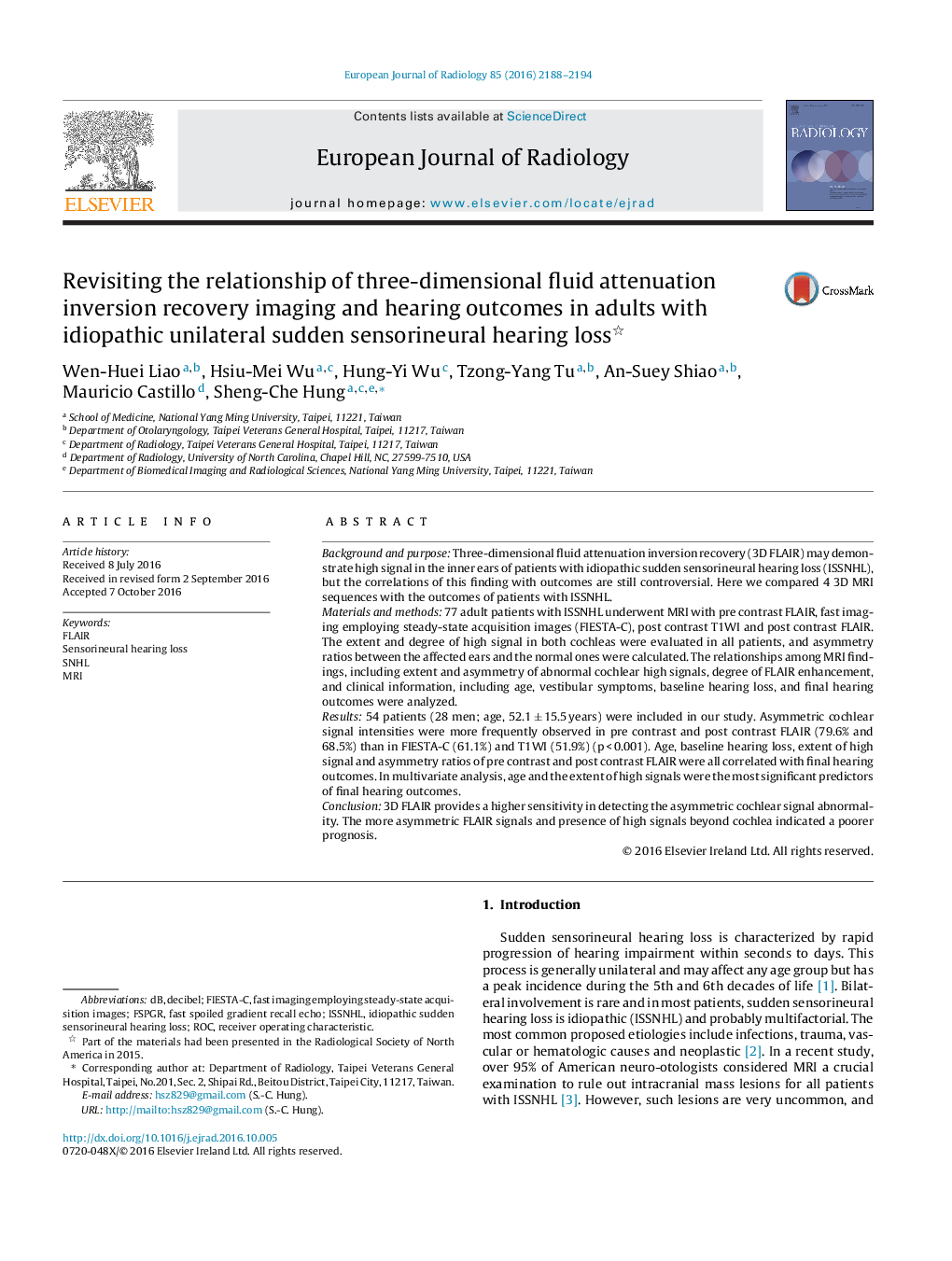| Article ID | Journal | Published Year | Pages | File Type |
|---|---|---|---|---|
| 5726099 | European Journal of Radiology | 2016 | 7 Pages |
Background and purposeThree-dimensional fluid attenuation inversion recovery (3D FLAIR) may demonstrate high signal in the inner ears of patients with idiopathic sudden sensorineural hearing loss (ISSNHL), but the correlations of this finding with outcomes are still controversial. Here we compared 4 3D MRI sequences with the outcomes of patients with ISSNHL.Materials and methods77 adult patients with ISSNHL underwent MRI with pre contrast FLAIR, fast imaging employing steady-state acquisition images (FIESTA-C), post contrast T1WI and post contrast FLAIR. The extent and degree of high signal in both cochleas were evaluated in all patients, and asymmetry ratios between the affected ears and the normal ones were calculated. The relationships among MRI findings, including extent and asymmetry of abnormal cochlear high signals, degree of FLAIR enhancement, and clinical information, including age, vestibular symptoms, baseline hearing loss, and final hearing outcomes were analyzed.Results54 patients (28 men; age, 52.1 ± 15.5 years) were included in our study. Asymmetric cochlear signal intensities were more frequently observed in pre contrast and post contrast FLAIR (79.6% and 68.5%) than in FIESTA-C (61.1%) and T1WI (51.9%) (p < 0.001). Age, baseline hearing loss, extent of high signal and asymmetry ratios of pre contrast and post contrast FLAIR were all correlated with final hearing outcomes. In multivariate analysis, age and the extent of high signals were the most significant predictors of final hearing outcomes.Conclusion3D FLAIR provides a higher sensitivity in detecting the asymmetric cochlear signal abnormality. The more asymmetric FLAIR signals and presence of high signals beyond cochlea indicated a poorer prognosis.
